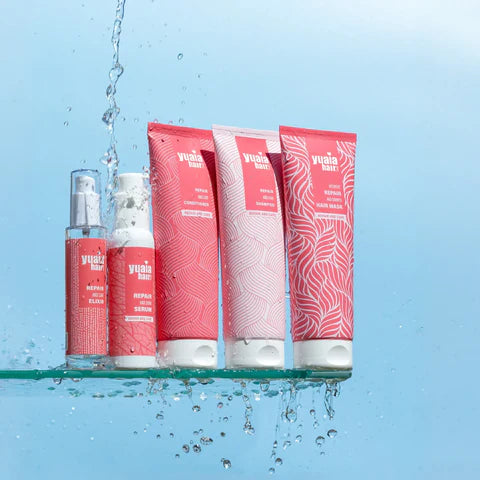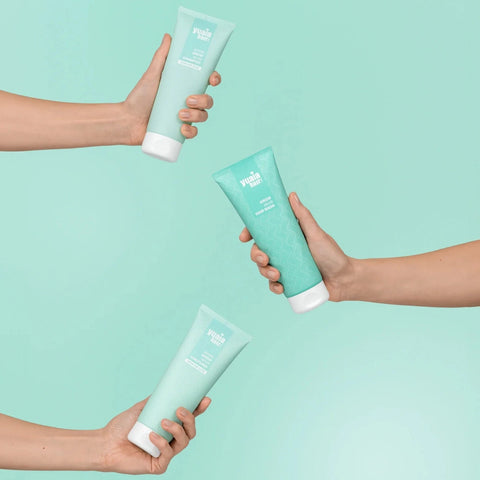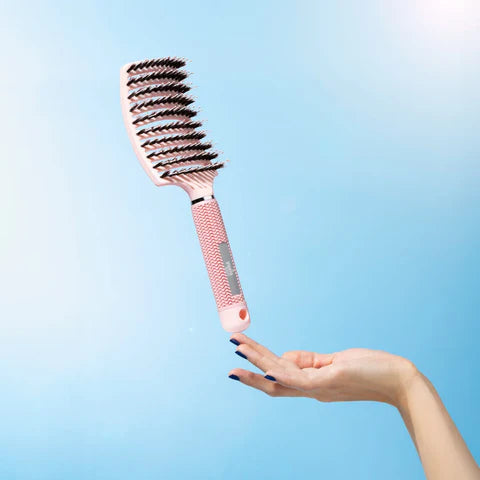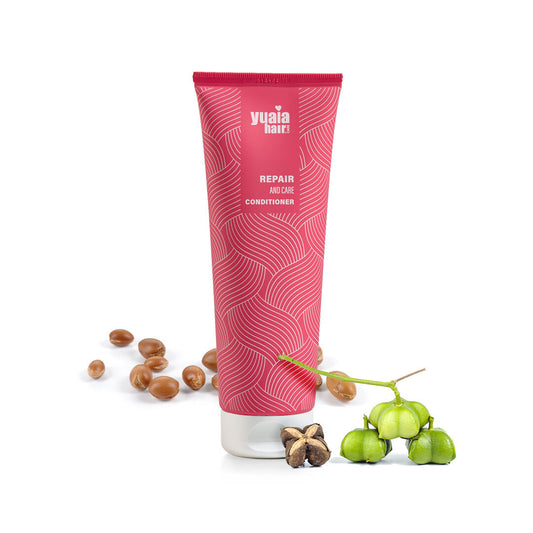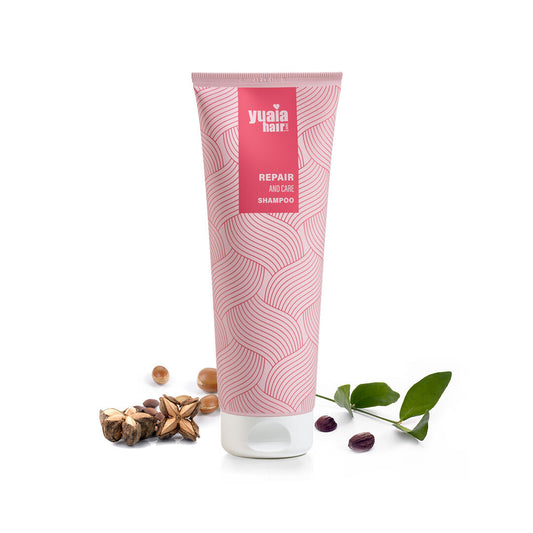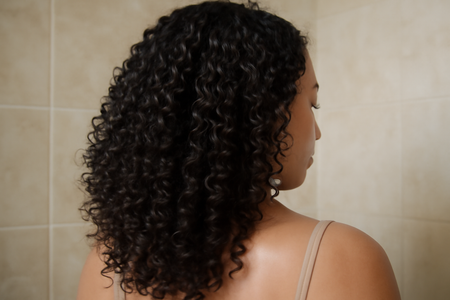
Exploring the subcategories of type 3 hair
Delving into the subcategories of type 3 hair reveals a fascinating range of curl patterns, each with its own distinct characteristics and care requirements. Understanding these subcategories can help you tailor your hair care routine to meet the specific needs of your curls.
3A curls
3A curls are recognized for their large, loose spirals that often resemble the shape of a lowercase 's'. These curls are typically smooth and shiny, with a diameter similar to sidewalk chalk. To maintain their definition and prevent frizz, it's important to keep them hydrated and protected from environmental stressors. Consider incorporating a product like our Twirl and Curl curly cream into your routine. This cream is designed to enhance curl definition while providing a moisture boost, leaving your curls looking vibrant and bouncy.
3B curls
3B curls are tighter than 3A, with coils about the size of a Sharpie marker. These curls are known for their impressive volume and tendency to shrink as they dry, which can make them appear shorter. To combat shrinkage and maintain curl integrity, focus on moisture-rich products and techniques that encourage curl elongation. Regular deep conditioning treatments can help keep 3B curls hydrated and minimize frizz.
3C curls
3C curls are the tightest within the type 3 category, forming dense corkscrews similar in circumference to a pencil or straw. This subtype boasts the highest density and is most prone to dryness and frizz. Emphasizing moisture retention is key for 3C curls, as they require extra nourishment to maintain their shape and prevent breakage. Using products that lock in moisture and reduce frizz can significantly enhance the appearance and feel of 3C curls.[products_3]
Care and styling recommendations for type 3 hair
Proper care and styling are essential for maintaining the health and appearance of type 3 hair. Here are some tips to help you manage your curls effectively:
Hydration and moisture
Keeping type 3 hair hydrated is crucial to preserving curl definition and minimizing frizz. Opt for sulfate-free shampoos and conditioners that gently cleanse without stripping natural oils. Regularly using a moisturizing conditioner can help maintain the hair's moisture balance, making it easier to manage and style.
Managing frizz
Frizz control is a common concern for those with type 3 curls. To combat frizz, consider incorporating regular deep conditioning treatments into your routine and avoid harsh chemicals that can exacerbate dryness. Additionally, using a rosemary hair oil can help seal in moisture and add shine, leaving your curls looking smooth and defined.
Styling techniques
Styling type 3 curls can enhance their natural beauty and volume. Techniques such as scrunching and diffusing can help define curls and reduce drying time. When using heat styling tools, always protect your hair with a heat protectant spray to prevent damage and preserve curl health.
Common questions about type 3 hair
How do I identify my specific curl type within type 3?
Identifying your specific curl type within type 3 involves observing the diameter and tightness of your curls. 3A curls are large and loose, resembling a lowercase 's', while 3B curls are tighter and about the size of a Sharpie marker. 3C curls are the tightest, forming dense corkscrews similar to a pencil or straw. Examining these characteristics can help you determine your specific curl type.
Why does my type 3 hair shrink when it dries?
Shrinkage in type 3 hair occurs because the natural curl pattern tightens as it dries, which is especially common in 3B and 3C curls. This phenomenon can make your hair appear shorter than it actually is. To manage shrinkage, consider using styling techniques that enhance curl elongation, such as stretching or banding, and apply products that help maintain moisture and definition.
Brushing and detangling type 3 hair
Effective brushing techniques
Brushing type 3 hair requires the right tools to maintain curl integrity and prevent breakage. Using a Curvy Brush can gently detangle hair without disrupting the curl pattern. This brush is made to glide through curls smoothly, reducing the risk of damage and frizz.
When to brush
It's best to brush type 3 hair when it's wet and conditioned. This helps prevent breakage and makes detangling easier. Applying a leave-in conditioner or detangling spray before brushing can also enhance slip and protect the hair from damage.
Comparing type 3 hair with other types
Differences from type 2 and type 4 hair
Type 3 hair is distinct from type 2 (wavy) and type 4 (coily) hair due to its spiral curls and medium to thick texture. Unlike type 2 hair, which tends to be flatter and less voluminous, type 3 hair has a natural lift and fullness. Compared to type 4 hair, type 3 curls are less tightly coiled and require different moisture and styling needs.
Understanding the curl spectrum
The curl spectrum ranges from straight to coily textures, with type 3 hair sitting in the middle. This positioning gives type 3 hair a unique blend of volume and curl definition, making it essential to tailor hair care routines to its specific needs. Understanding where your hair falls on this spectrum can help you choose the right products and techniques for optimal care.
Frequently asked questions
Can I use the same products for all type 3 subcategories?
While some products may work across all type 3 subcategories, each subtype has specific needs. For example, 3A curls may benefit from lighter products to avoid weighing them down, while 3C curls may require richer, more hydrating formulations to combat dryness and frizz.
How often should I wash type 3 hair?
The frequency of washing type 3 hair depends on your hair's specific needs and lifestyle. Generally, washing every 3-7 days is recommended to maintain moisture balance and prevent dryness. Opt for sulfate-free shampoos to cleanse without stripping natural oils.
What styling techniques work best for type 3 hair?
Styling techniques such as scrunching, plopping, and diffusing can enhance the natural curl pattern of type 3 hair. These methods help define curls, reduce frizz, and add volume. Using a rosemary hair oil can also add shine and manageability to your curls.
 2-5 Tage Lieferung
2-5 Tage Lieferung
 Trusted Shop Garantie
Trusted Shop Garantie
 Zufriedenheitsgarantie
Zufriedenheitsgarantie


